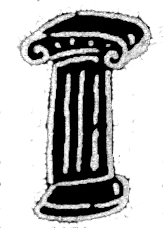Panzil Arrives
For a children’s book I seized on the idea of writing about self-discovery, but with a radical twist.just as language emerges from intra-familial linguistic paradigms, personality is formed from the primal interactions between parents and oneself. Such interactions are shaped by context, interpretation and inference.Personality is how we are perceived by others. It’s the social clothing we wear as if it grew on us unawares. No mirror reflects it back.Children test their personalities on the key figures in their life: parents but especially peers and certain older persons that have impact— teachers, religious leaders, and heroic figures, athletic idols, celebrities, popular fantasy characters. Children are keenly aware of forces that might change them, either by experience or by wishing. But they undergo change within the confines, broad or narrow, of their personalities.When I picked a young dragon as my protagonist, his (or her) self-discovery would have to entail a radical change. By age ten personality would have already been laid down. The urge to change might have resulted—in Panzil’s feverishly searching mind—from aggression turned over. He could naturally have seen aggression pointed in its opposite direction. aggression as assertion toward good instead of evil. It inspired him and enlivened him, even as it flew against his parents’ worldview..
Panzil realized that he had somehow separated himself from the ancient tradition of dragons as fierce and evil creatures.
.Panzil would surely have found the dragons’ contemporary world not only dull but anachronistic. The story begins with ten-year-old Panzil waking to the realization that dragons were living in the past, lying in perpetual wait, hostaging nothing and no one. No ravishingly beautiful damsel in a fiendish dragon's clutches, no treasure chest overflowing with gold and precious stones bearing the weight of a dragon snorting fire and fury. Just a group of lumpy green critters almost embarrassed to be recognized as dragons.Being young and bright-eyed and keen on making his mark in the world, Panzil realized that he had somehow separated himself from the ancient tradition of dragons as fierce and evil creatures.To begin with, Panzil was a vegetarian, a practice altogether antithetical to what Dragons are known to feast on: freshly killed flesh.Also, Panzil abhorred violence. He was peace-loving. And more than just that—he wanted to do good in the world. He thought he could redeem the horrible image of dragons by becoming its total opposite: a kind, caring dragon that would use his powers for good, for helping not destroying.With all his fierce dragon equipment Panzil was initially at a loss about how to convert them to good use. to re-focus these war-like embellishments toward peaceful use. Perhaps the most formidable—and deployable—of dragon powers is their terrible fire-breath, a high powered flame-thrower with laser-like precision. Not a promising instrument for good.His recourse? A visit to the old, revered dragon, the wise sage Dr. Warlocka. He will teach Panzil a way to convert fire-breath into something opposite and good.With this new power in hand, Panzil then prepared to venture out of the deep forest fen where dragons surreptitiously reside. But he felt he would appear scarily conspicuous. It was another encumbrance he would have to resolve. And he did.Ultimately Panzil succeeded in making the transformation he had longed for.He found acceptance.He discovered a new self, actually the realization of his real self. He found a place in the world for a good young dragon.His name, with its new meaning, is Panzil. And he’s already into his new adventure: how to save white Christmas, a global warming lesson[video width="960" height="540" mp4="http://murrayschane.wpengine.com/wp-content/uploads/2017/12/Panzil-video.mp4"][/video]

